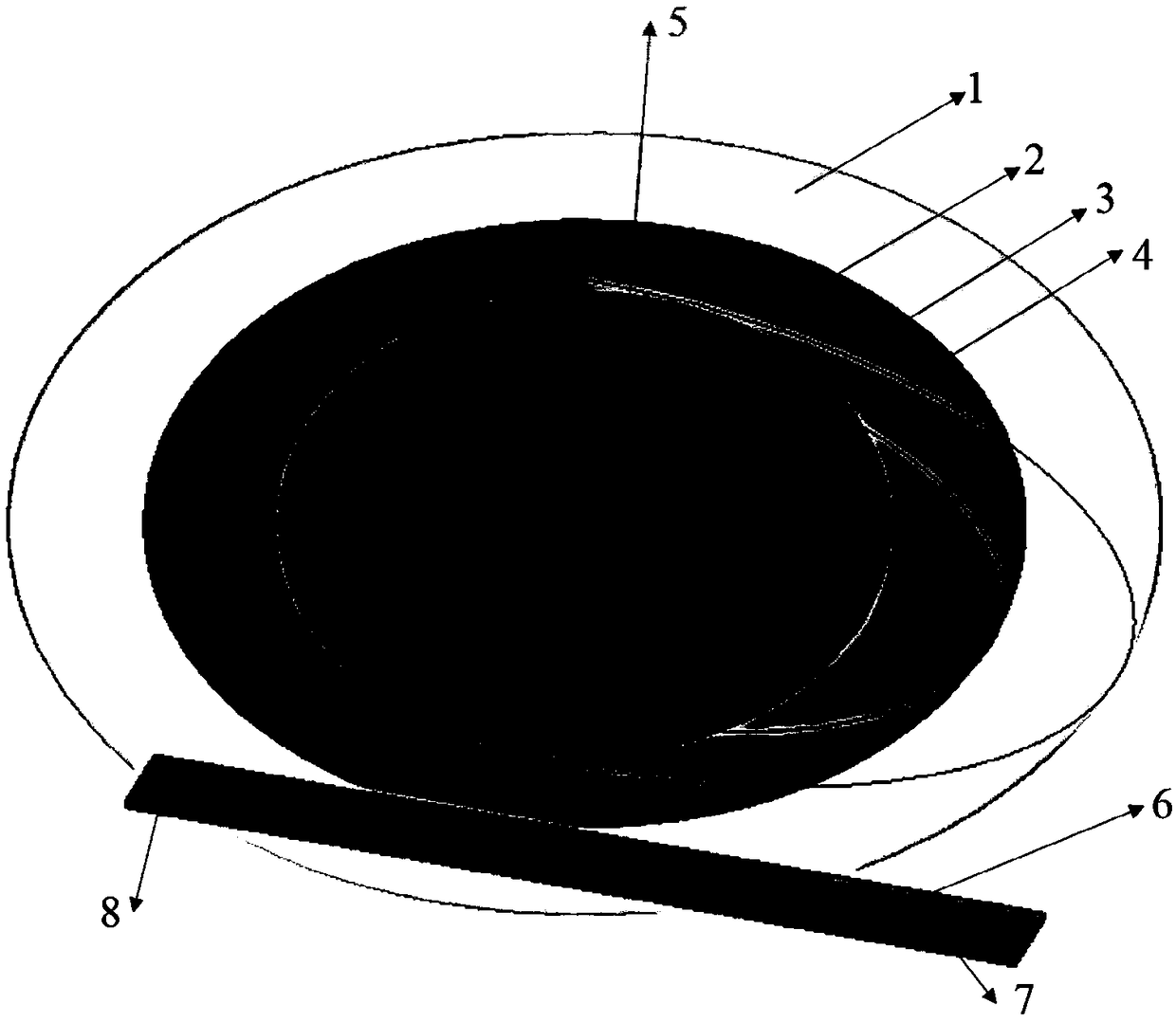Wide angle scanning ellipsoidal dielectric lens antenna based on phased array feed
A dielectric lens antenna and wide-angle scanning technology, which is applied in the direction of antenna arrays, antennas, and electrical components that are powered separately, can solve the problems of difficult mass production, uncontrollable processing costs, and low antenna aperture efficiency, and achieve good control gain and The effect of wide-angle scanning
- Summary
- Abstract
- Description
- Claims
- Application Information
AI Technical Summary
Problems solved by technology
Method used
Image
Examples
Embodiment Construction
[0025] Specific implementation plan
[0026] figure 1 It exemplarily describes the dielectric constant distribution of the ellipsoidal dielectric lens after the traditional spherical Lumber lens antenna is compressed and deformed by using variable optics. As shown in the figure, the central dielectric constant of the ellipsoidal dielectric lens is the highest at 4. The outermost layer of the edge gradually approaches 1, so that the dielectric constant of the ellipsoidal dielectric lens can be limited in the range of 1.5 to 3 in the optimization algorithm, which not only satisfies the properties of transformation optics, but also ensures that the dielectric constant is not too low. figure 2 with image 3 Describes the design structure of a wide-angle scanning ellipsoidal dielectric lens antenna based on phased array feeding. As shown in the figure, this structure includes five layers of ellipsoidal dielectric from the outside to the inside (1)(2)(3)(4) )(5), 1*9 square microstrip ...
PUM
 Login to View More
Login to View More Abstract
Description
Claims
Application Information
 Login to View More
Login to View More - R&D
- Intellectual Property
- Life Sciences
- Materials
- Tech Scout
- Unparalleled Data Quality
- Higher Quality Content
- 60% Fewer Hallucinations
Browse by: Latest US Patents, China's latest patents, Technical Efficacy Thesaurus, Application Domain, Technology Topic, Popular Technical Reports.
© 2025 PatSnap. All rights reserved.Legal|Privacy policy|Modern Slavery Act Transparency Statement|Sitemap|About US| Contact US: help@patsnap.com



